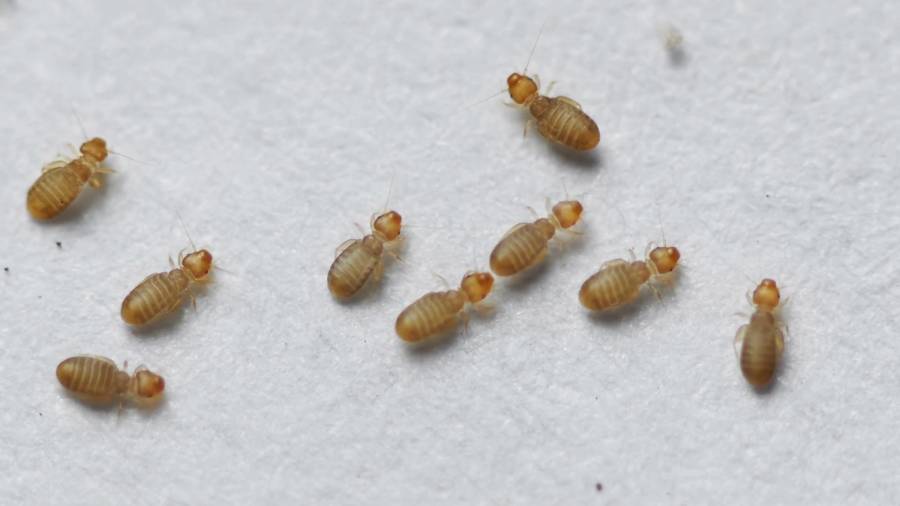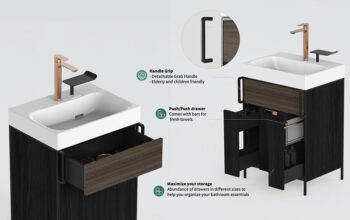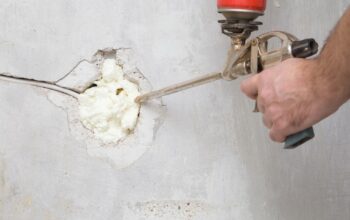Booklice may be tiny, but they can quickly become a major nuisance in homes across humid climates like Singapore. Often mistaken for dust or harmless pests, booklice are capable of infesting everything from bookshelves to food storage, and their persistent presence can be frustrating for homeowners.
In this article, we dive deep into what booklice are, why they thrive in Singapore, how to identify an infestation, and most importantly—how to get rid of them and prevent them from coming back.
What Are Booklice?
Understanding the Pest
Booklice, also known as psocids, are minuscule insects that typically measure less than 2 millimeters in length. Despite their name, booklice are not true lice and do not bite or feed on human blood. Instead, they thrive on mold, fungi, and organic matter found in damp, warm environments.
Where Do They Live?
Booklice can be found in:
- Books, paper, and cardboard (especially in humid conditions)
- Kitchen pantries, especially near flour, grains, or old packaging
- Cracks in walls, cupboards, and under floorboards
- Bathrooms and laundry areas where moisture is present
In Singapore’s warm and humid climate, homes can easily become the perfect breeding ground for these pests.
Why Is Booklice Infestation Common in Singapore?
The Role of Humidity
Singapore’s tropical climate—characterized by high humidity levels year-round—is ideal for booklice. These insects thrive in environments where the relative humidity is above 60%, which is common in both older and poorly ventilated homes.
Poor Ventilation
Poor airflow in storage rooms, bathrooms, or tightly packed bookshelves can create microclimates of moisture. These dark and damp areas are ideal habitats for mold growth, which in turn attracts booklice.
Mold and Fungal Growth
Booklice feed on microscopic mold spores. Even if you don’t visibly see mold, it might exist on old papers, books, or within poorly sealed food items—unseen to the naked eye but a feast for these pests.
Signs of a Booklice Infestation
Visual Identification
You may notice tiny, light-colored insects crawling quickly across surfaces like books, window sills, or pantry shelves. They are often mistaken for dust mites, but a closer look reveals their insect-like form.
Damage to Materials
While booklice do not eat fabric or wood, they can:
- Leave stains or discolored patches on books and documents
- Cause contamination in food packaging
- Create musty odors in affected areas due to mold
Increase in Mold and Mildew
If you’re noticing an uptick in moldy smells or patches around the house, this might signal favorable conditions for a booklice infestation.
Booklice Treatment: Getting Rid of the Pests
Step 1: Identify and Remove Infested Items
Start by locating and removing infested items. These could include:
- Books with visible mold
- Old cardboard boxes
- Damp papers or stored documents
- Unused food items or expired grains
Dispose of severely infested items in sealed bags to prevent further spread.
Step 2: Lower Humidity Levels
Since booklice require moisture to survive, controlling humidity is essential:
- Use dehumidifiers in high-risk areas like storerooms, pantries, and wardrobes.
- Keep the indoor humidity below 50% if possible.
- Improve ventilation by opening windows and using exhaust fans in bathrooms and kitchens.
Step 3: Clean and Disinfect
Thoroughly vacuum all infested areas, especially cracks, crevices, and behind furniture. Follow up with:
- A wipe-down using vinegar and water solution
- Baking soda on surfaces to absorb moisture
- Silica gel packets in storage spaces to keep them dry
Step 4: Dry and Freeze Items
For non-disposable items like books and documents:
- Dry them under sunlight or in a well-ventilated room
- Place them in a sealed plastic bag and freeze them for a few days to kill any remaining insects and larvae
Step 5: Insecticides (Optional)
Use insecticidal sprays labeled safe for indoor use only if the infestation is severe. However, be cautious around food storage and children’s play areas. Natural alternatives include diatomaceous earth, which can be applied in cracks and corners where booklice hide.
Preventing Future Infestations
Monitor Humidity Long-Term
Keep a hygrometer in areas prone to moisture to monitor humidity levels regularly. Make it a habit to use dehumidifiers during the wetter months of the year.
Store Items Properly
- Avoid overstuffing bookshelves or cabinets.
- Store papers in plastic containers rather than cardboard.
- Keep dry foods in airtight containers made of glass or hard plastic.
Regular Cleaning
- Clean kitchen shelves and cupboards regularly to prevent mold and food residue buildup.
- Use mold-preventing sprays or sachets in storage areas.
- Vacuum and dust books and shelves every few weeks.
When to Seek Professional Help
While minor infestations can often be managed independently, there are times when professional help becomes necessary:
- If you notice persistent infestation despite regular cleaning
- If there’s widespread mold growth in hard-to-reach places
- If you experience recurring issues even after treatment
Professional pest control services can carry out a thorough inspection, provide booklice treatment singapore options, and advise on long-term prevention strategies tailored to your home environment.
Conclusion: Peace of Mind Through Prevention
Booklice may be small, but they can significantly affect your living space, especially in Singapore’s naturally humid conditions. The key to effective booklice treatment in Singapore lies in understanding their behavior, eliminating their food source (mold), and reducing humidity.
Whether you’re dealing with a mild issue or a widespread infestation, early action, regular maintenance, and moisture control are your best defense. With these strategies in place, you can keep your home booklice-free and preserve your valuable books, food, and indoor air quality for good.




